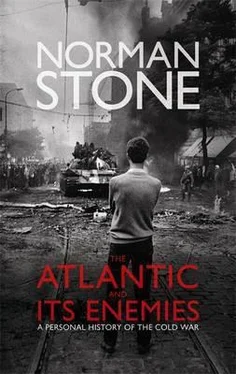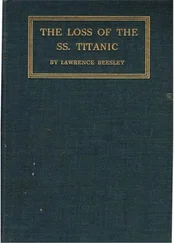Alain Besançon has a passage to illustrate the problem:
Take a statement such as ‘The USSR with an annual output of 145,000,000 tons of steel is the first metallurgical power in the world’. Everyone knows that the USSR produces fewer cars than Spain, that its domestic appliances are not comparable with ours, that the railway network is hardly longer than India’s, that the motorways are far inferior to France’s, and that production of tanks, however ultra-lavish, cannot account for more than one or two million tons of steel. What, therefore, can this figure of 145,000,000 tons mean, given that it is higher than that of Germany’s and Japan’s put together, while they produce about twelve million cars and much else? The conclusion has to be drawn that these 145,000,000 tons include
(1) Production of real steel
(2) Production of low-grade steel
(3) Production of useless steel
(4) Production of steel for rust
(5) Production of pseudo-steel and
(6) Pseudo-production of steel
There were other comparisons, for instance with Spain, and on the official figures these meant something. However, again reality — a mere glance at a Moscow market selling shrivelled potatoes or dubious meat — told a quite different story. The USSR might be compared with, say, India, but even then there were problems. If you saw Soviet advisers returning from such places, their suitcases would be full of tomatoes, bunches of ballpoint pens, hams, jeans. The USSR had in fact less foreign trade than Belgium, fewer cars than Brazil, fewer telephones than Spain. The writer Boris Souvarine had said in 1938 that the very name ‘USSR’ contained four lies. He had gone on:
rights of man, democracy, freedom — all lies. Five Year Plans, statistics, achievements, results: all lies. Assemblies, congresses: pure theatre, staged. The Dictatorship of the Proletariat: a huge imposture. Spontaneity of the masses: meticulous organization. Right, Left: lie upon lie. Stakhanov: liar. Stakhanovism: a lie. Radiant life: lugubrious farce. The New Man: an old ape. Culture: barbarism. The Genius Leader: an obtuse tyrant.
Resistance took various forms. One was a strike by women. They no longer made children, and (as the writer Sonja Margolina said) complained that the system had turned the men into babies, with no pride or responsibility. From 1965 to 1985 the population had risen from 230 million to 275 million, but the average growth rate fell from 1.8 to 0.8 per cent, and there were large regional disparities. The Russian rate fell from 13.1 per cent around 1960 to 5.7 per cent in 1985, the Ukrainian from 9.4 to 4.3 per cent. Estonia and Latvia had the lowest birth rates in the world. However, the Tadzhik rate was much higher — a 50 per cent increase in a decade. Besides, the death rate rose, uniquely among advanced countries. A man died at seventy in 1969, at sixty-two in 1979, and infant deaths were not even recorded if they occurred in the first year. In 1986 a quarter of the district hospitals had septic tanks for sewage disposal, and a fifth had no running water. Yet abortions, given the absence of proper contraception, ran at 7 million cases per annum as against 4.9 million live births. Family size dropped to 3.5 persons in Russia and even less in the Baltic, though it still stood at around 5 in central Asia. Meanwhile, a woman’s lot was not a happy one: three quarters of women were involved in manual labour, including construction, and certain professions, notably schoolteaching, were feminized (75 per cent). It was they, too, who queued, losing twenty-one days per annum even in 1970.
Meanwhile there was another classic sabotage-cum-escape, alcohol, and under Brezhnev alcoholism turned into an epidemic. In 1979, perhaps 18 million people passed through the sobering-up stations ( vytrezviteli ) run by the militia, and a tenth of the population of Leningrad was arrested for drunkenness. In 1980 50,000 people died of it, and if murders are included, 200,000. It accounted for half of the divorces — in the towns of European Russia, half of the marriages — and divorce (at 250 roubles) was quite expensive. All in all, alcohol was said to take 10 per cent of the national income. In the factories business could not really be done after midday, often enough, and the Poles reckoned that there was a ‘morphology of Communism’ in that piggy-eyed, fat and flushed faces showed the results of complicated negotiations between power-wielders, left by their assistants to sort out common problems in false alcoholic concord.
One challenge to this might occur: criticism by educated people behind the scenes. It was here that the kitchen table played its part, and of course the KGB knew very well what was happening, whether because of bugged conversations or because their own families joined in. Andropov was well aware, for instance, that young people were performing the theatre of the absurd — Beckett, Ionesco or Pinter, for instance — at home, and reported as much to (of all things) the Politburo. The immediate answer was to attempt diversions, bogus controversies in journals and the like. There was also a ‘Talmud’ of 400 forbidden subjects such as the statistics of infant mortality (the census was stopped) or grain output. The relative freedom of Khrushchev’s time went. A challenging historian, Alexandr Nekrich, was exiled for telling the truth about the terrible disasters of 1941. P. N. Volobuyev, head of the Academy’s Institute of History, had impressed his Western hosts in the sixties, and was dismissed. There had been a clever historian of the central question of Tsarist Russia, the agrarian one — A. A. Tarnovsky. He had contributed to a multivolume series on Russia’s history that was not bad at all. He was packed off to Siberia as a schoolteacher, and the orthodoxy was maintained by one S. P. Trapeznikov, who recycled Lenin on radiant-tomorrow lines. Tarnovsky is said to have died of drink. Curiously enough the Central Asian historians suffered less, and rehabilitated their nations.
In 1980 Mikhail Gorbachev was elected to the Politburo, by twenty years its youngest member. There had been signs of a rethink in the system, but at the top level it carried on much as before. The Olympic Games were the last old-fashioned piece of triumphalism and by now Brezhnev was only just capable of doing his job. He died in November 1982 and was succeeded by another piece of old furniture, in this case the KGB’s Andropov, who had once crushed Budapest and in the seventies had had charge of persecuting the dissidents, especially Aleksandr Solzhenitsyn. He was sixty-eight, and soon fell badly ill, dying in February 1984. In turn he was succeeded by old Konstantin Chernenko, the protégé of Brezhnev, himself elderly and suffering from emphysema. He died in March 1985, and Gorbachev at last emerged. His supporters were the institutchiki , men who made a proper study of ‘capitalism’ in the USA or western Europe, were fluent in the languages and knew the factual background. In the seventies, as part of the détente strategy, new institutes had been set up, for the study of the world economy or international relations in general, and they did not have illusions. Viktor Dakhichev became quite outspoken, as had Khrushchev’s son-in-law, Alexey Adzhubey before him, to the effect that West Germany could be cultivated: why wreck relations with that economic giant for the sake of useless lumber in Brandenburg and Saxony? Or Yevgeney Primakov, in the Institute of Social Sciences that trained people from the Third World, himself a fluent speaker of Arabic and Persian, who could easily see that the USSR was getting nowhere in a Middle East that found it repulsive and backward. In the Central Committee machine, the International Department, successor of the Comintern, men argued for a new course in foreign affairs. Relations with the European Left had led nowhere: NATO had survived the lengthy campaign against the placing of missiles in Germany. That department had been run for a generation by Boris Ponomarev, and no doubt its support for Gorbachev was part of a campaign to unseat that old man, which in 1985 duly happened. After that, there were new faces: Georgy Arbatov for the USA, or Aleksandr Yakovlev, sidelined in the foreign ministry, both of them fluent in English and flexible in manner; Gennady Gerasimov, Georgy Shakhnazarov and Fyodor Burlatsky had all been modernizers associated with Andropov. It was in its way ‘police liberalism’, which went back to Beria. The KGB knew how far things had gone wrong, and, with a view to shaking up the old men, saw that a degree of public criticism and respect for law would be helpful, quite apart from the good impression to be made abroad. The Party and the KGB had had a host-parasite relationship, even (terms changed) before 1914. Now, the parasite was given responsibility.
Читать дальше












![Edward Ellis - Adrift on the Pacific - A Boys [sic] Story of the Sea and its Perils](/books/753342/edward-ellis-adrift-on-the-pacific-a-boys-sic-s-thumb.webp)